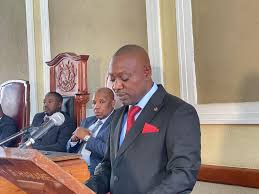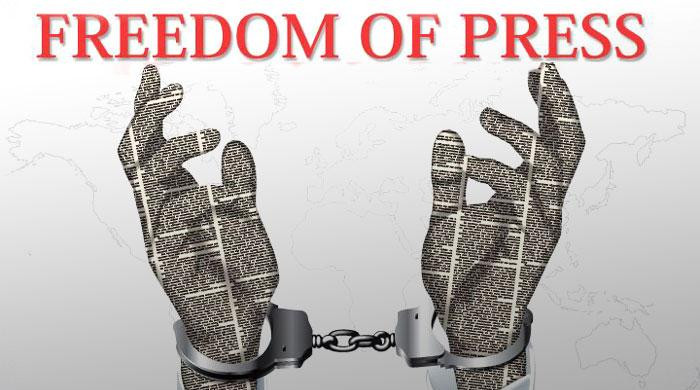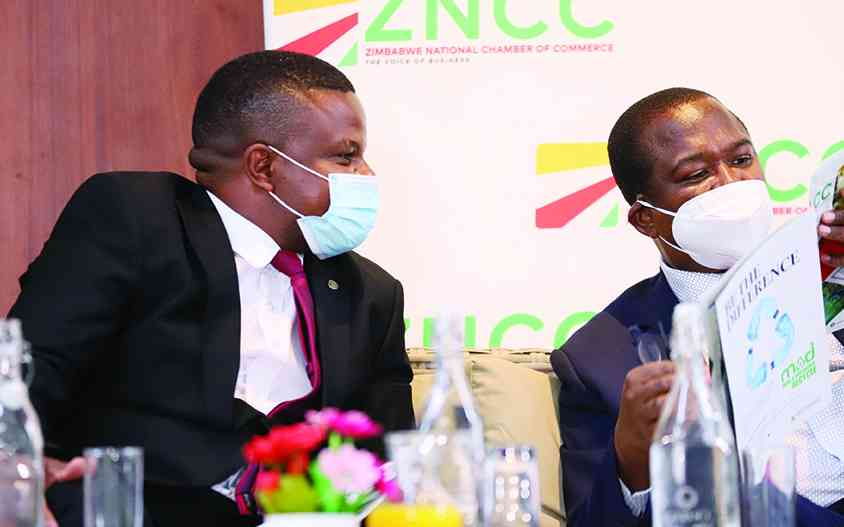Report by Bernard Mpofu, Acting Business Editor
ONE speaker once remarked that economic development is what’s going to make mountaintop removal palatable. But that may not be entirely true for Zimbabwe.
The southern African country has one of the highest literacy levels in Africa and has since independence in 1980 crafted several economic development programmes to steer growth yet many have been jettisoned and are in history’s dustbins.
Not many have been a panacea to economic woes. Zimbabwe’s successive economic blueprints have fallen short on implementation resulting from lack of political will.
With post election euphoria over and Zanu PF now firmly in control of government levers, the party says it has hit the ground running, crafting a new economic plan in a record three months.
The Zimbabwe Agenda for Sustainable Socio-Economic Transformation (Zim Asset 2013-2018), a development programme extracted from the party’s election manifesto, is a plan modelled along China’s development programme.
Keep Reading
- Chamisa under fire over US$120K donation
- Mavhunga puts DeMbare into Chibuku quarterfinals
- Pension funds bet on Cabora Bassa oilfields
- Councils defy govt fire tender directive
As the acronym suggests, Zimbabwe, a country endowed with natural resources, wants to leverage her resources to attract foreign capital. The quest to leverage mineral resources over the years has not changed Zimbabwe’s status as a poor country.
Zim Asset is a two-pronged approach—the quick fix (2013-15) and the long term—of dealing with the woes confronting the economy. Typical of previous development plans created by the party over the years, the issue of economic sanctions is echoed.
To rid of complacency and bureaucratic inertia, the party has entrusted The Office of the President to take an oversight role of the programme. But can it work for Zimbabwe?
Analysts say the policy will fail as the State wants to be in control instead of ensuring a favourable environment was in place for businesses to thrive. “It is a centrist economic plan focusing on the office of the president and Cabinet or the collective responsibility of Cabinet ministers under the tutelage of the president,” said Takura Zhangazha, a local political analyst.
“More significantly, it is a model that follows a State capitalist model similar to China’s development plan. The focus is on empowering the State to function like a profit-driven corporate. Basically, the model intends to make the State be involved in every economic activity not necessarily for the best possible interest, but to treat the State like a big corporate entity which pursues profit’s for profit sake, hence emphasis on Public-Private Partnerships.”
That emphasis, Zhangazha argues, is indicative of a State that wants to be in direct control of the economy, but simultaneously outsourcing the running of the economy to entities that may not have the same obligation of economic delivery to all the people of Zimbabwe as should a democratic government.
“Neither of the two approaches are mutually exclusive, therefore, the failure of the quick-fix approach will potentially render the entire project redundant,” Zhangazha said.
University of Zimbabwe political science professor Eldred Masunungure contends that Zim Asset will face hurdles in implementing.
First, government immediately requires significant foreign direct investment to “quick-fix” the economy as envisaged in Zim Asset. Masunungure also argued that the government did not fully engage stakeholders in drafting the document, warning that this may be detrimental.
“It is one thing to try to consult in a ritualistic fashion, but it is another to be substantively involved in a programme like Zim Asset.
The test of the policy is in implementation and its funding is also critical,” Masunungure said.
“It was in gestation period before the July 31 election in anticipation of victory.
“The drafting of the development blueprint should have been done through a collective process.
“But this is clearly a Zanu PF document for national policy. It excludes key strategic shareholders such as the private sector and NGOs. It will become difficult to get that buy-in from such stakeholders, making the document defective at birth. It is likely not to achieve its expected results. It should have a national character.”
The Office of the President engaged business organisations two days after the July 31 elections asking for measures required to address economic challenges, clearly suggesting that crafting of the document was in its final stages.
Zim Asset, analysts further observe, could also have been a climbdown by Zanu PF on the indigenisation and empowerment policy, which critics say was a gimmick to hoodwink the electorate ahead of the polls.
The party is making clarion calls for foreign direct investment against the backdrop of a law that has been criticised for spooking away investors.
“The indigenisation and economic policy that assumedly won Zanu PF the last election is inadequately dealt with in Zim Asset. If it was revolutionary, its thread will run through every cluster which they highlight in Zim Asset,” Zhangazha said.
“Therefore the document appears more to be seeking to manage international capital disposition towards the same policy in order to build FDI confidence and project Zimbabwe as a good investment destination regardless of the politics surrounding indigenisation and empowerment.”
As politics of the day drives the economic agenda and Zanu PF continues to act like the new sheriff in town, lack of buy-in from stakeholders and funding constraints could render the programme an exercise in futility. Zimbabwe cannot continue to be another resource curse!
Excecutive summary
ZIMBABWE experienced a deteriorating economic and social environment since the year 2000 caused by illegal economic sanctions imposed by the Western countries. This resulted in a deep economic and social crisis characterised by a hyperinflationary environment and low industrial capacity utilisation, leading to the overall decline in Gross Domestic Product (GDP) by 50% in 2008.
After the landslide victory by the Zanu PF party in the July 31 harmonised elections, the party was given the mandate to govern the country for a five-year term. To guide national development for these five years, Government has crafted a new economic blue print known as the Zimbabwe Agenda for Sustainable Socio-Economic Transformation (Zim Asset).
This economic blue print was developed through a consultative process involving political leadership in the ruling Zanu PF Party, Government, Private Sector and other stakeholders. Source documents recognise the continued existence of the illegal economic sanctions, subversive activities and internal interferences from hostile countries. This therefore calls for the need to come up with sanctions busting strategies, hence Zim Asset’s focus will be on the full exploitation and value addition to the country’s own abundant resources.
The Vision of the Plan is “Towards an Empowered Society and a Growing Economy”. The execution of this plan will be guided by the following Mission: “To provide an enabling environment for sustainable economic empowerment and social transformation to the people of Zimbabwe”.
The implementation of Zim Asset will be underpinned and guided by the Results Based Management (RBM) System and will be used as a basis for the macroeconomic budgetary framework by Treasury, commencing with the 2014 fiscal year.
Zim Asset is a cluster based Plan, reflecting the strong need to fully exploit the internal relationships and linkages that exist between the various facets of the economy. These clusters are as follows:
- Food Security and Nutrition;
- Social Services and Poverty Eradication;
- Infrastructure and Utilities;
- Value Addition and Beneficiation.
To buttress the aforementioned clusters, two sub-clusters were also developed namely Fiscal Reform Measures and Public Administration, Governance and Performance Management. To ensure the successful implementation of Zim Asset, key strategies, success factors and drivers have been identified as implementation pillars.
For easy conceptualisation, comprehension and appreciation of the key result areas, outcomes as well as outputs, Zim Asset is set out in Matrix form to ensure the institutionalisation and mainstreaming of a results based culture in the public sector in conformity with the Results Based Management System.
Under this arrangement, initiatives identified under each cluster will be implemented immediately to yield rapid results (Quick Wins) in the shortest possible time frame (October 2013 – December 2015), with the other deliverables targeted up to December 2018. In the process, Government will undertake blitz interventions in the delivery of services.
In order to ensure that the Plan is fully funded, the following, inter-alia, have been identified as financing mechanisms: tax and non tax revenue, leveraging resources, Sovereign Wealth Fund, issuance of bonds, accelerated implementation of Public Private Partnerships, securitisation of remittances, re-engagement with the international and multilateral finance institutions and other financing options, focusing on Brazil, Russia, India, China and South Africa (BRICS).
The Office of the President and Cabinet will monitor and evaluate the implementation, monitoring and evaluation of the Plan.





